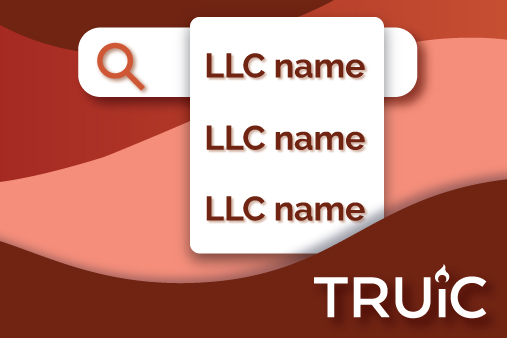10 Tips from Designers for Creating the Best Logo
A logo can do so much for your business. When every brand is trying to grab a foothold, a logo can be enough to catapult your company from relative obscurity into something a little more recognizable.
Even if you know what you want, you might not have the artistic skills to get it exactly right. Listening to the pros can make it easier to focus on what really matters. However, if you are ready to create your logo now, check out our Free Logo Generator and get your brand noticed.

The 10 Tips From Designers
1. Resist the Extra Touches
When it comes to serving your customer, it’s going the extra mile that matters. But applying the same concept to your logo is just plain counterproductive. Designers will tell you that you should quit while you’re ahead, even when you want to add just one more color, line, or word.
No matter how complicated your business is, your logo shouldn’t be. Simplicity is how companies change the context of brands in the public eye. For example, if you see a partially eaten apple today, you likely don’t think of buying fruit.
2. Use Custom Type
Your logo shouldn’t be composed of Times New Roman or Comic Sans. While your customers might not consciously think it, it’s a little lazy to just use a drop-down menu. Using custom type or hand-drawing lettering is not only difficult to copy, but it’s also likely to make an impression on your potential customers.
Designers will warn though that no matter how unique you are, there will be copycats if you’re successful enough. Coca-Cola has one of the more recognizable typography, which is why you’ll see it across a number of brands. Luckily, it serves as an homage to the soda most of the time rather than a way to siphon the brand’s customers.
3. Remember Your Target Audience
When Case Western Reserve University went through a rebranding effort at the start of the millennium, it paid an obscene amount of money to design a logo. Its students, mainly engineers, and pre-med majors, quickly decided that it looked like a fat man holding a surfboard. The logo was meant to symbolize the merging of two separate schools of thought, but the idea was scrapped quickly and the university defaulted to its old logo.
These kinds of stories happen more often than you think, and it’s a testament to how difficult logo design can really be. Your logo is not about your personal taste, but about the people that you want to help. You have to think about it from their perspective before you start brainstorming ideas.
4. Look at Your Competitors
This little underhanded move is not about stealing their ideas, but about learning the common themes across the board. The business owners of competing companies have already thought long and hard about their designs, and you might be able to pick up a few tricks if you stare long enough.
Are your competitors using similar colors, themes, or images? How can you tell customers that you’re in the same line of work, but different and better than the more established brands?
Designers will tell you that you can save a lot of time and hassle this way, especially if all that studying gives you an idea of the metric that sets you apart. For example, maybe you offer the same quality service or product for less money. If you can find a way to work affordability into your logo, it can be the boost you need to start building your base.
5. Use Negative Space
Negative space is such a clever use of design and makes for some of the more impactful logos. Similar to the old Magic Eye posters, it’s a little optical trick that makes a very big difference. The arrow hidden in FedEx, the face hidden in the letters of LG, the curves of the S in the USA network logo: these are all examples of how white space serves to make your logo that much more visually interesting.
Ideally, you should be using your negative space for the right reasons. For example, the arrow in FedEx is there to tell customers that their packages are on the move.
6. Factor in Symmetry
Ratio and symmetry should be taken into consideration when it comes to designing your logo. Your curves and lines should be consistent and aligned with the general message that you want to convey.
Rugged, natural brands might not care very much if one side looks like the other or the bottom looks directly proportional to the top (much like you’d see in the wings and the beak of the latest Twitter logo). However, a cute candy company going for a younger audience would likely follow these basic rules of uniformity.
7. Experiment With Different Formats
From business cards to smartwatches to magazines, designers will tell you that you need to decide the format of your logo on different mediums.
There are plenty of modern companies that might not consider print (e.g., newspapers, etc.), but you still have to consider what your logo will look like across the board on different kinds of tech. Experts recommend listing different applications where you might be featured and then asking printers, website designers, front-end developers — anyone who will have the expertise and insight to help you tweak the format.
8. Use Color Wisely
Color psychology is how color influences mood and perception. Thankfully, you don’t have to take a college course to get it right. In general, you should be picking the bold colors for a bold vision, and something a little subtler if you’re in a more traditional line of work.
Designers recommend choosing a logo that will look just as good in black and white, as you can’t always guarantee that you’ll be able to display the colors the way they were originally intended. In some cases, you might not even be able to afford those nuanced colors anyway.
9. Opt for Timelessness
What would someone say if they saw your logo 100 years from now? Coca-Cola inventors might not have predicted its incredible success when the idea was still just a twinkle in their eyes, but the brand opted for staying power by choosing a classic design. The logo is as evocative today as it was back then.
By all means, modernize your marketing to keep up with the digital crowd. Just don’t fall into a logo trap that will make your design passé by the time you’re coming up on your company’s fifth anniversary. Once you’ve got a timeless design on paper, try our Free Logo Maker to perfect it.
10. Tell a Story
Just because a logo looks great, doesn’t mean that there’s any real meaning behind it. Great logos will have a lot behind it. One of the more famous examples of this is the Toyota logo. Looked at one way, it might just seem like an iconic symbol.
But if you take the time to deconstruct it, the logo actually forms a monogram of a “T”. It can also be viewed as interlocking steering wheels. The creator said that the idea was to place the company’s heart with the heart of the customer, though this is less clear than its more obvious components.
What Designers Want You to Remember
The common thread behind these tips is that you’re trying to simplify your logo whenever possible and solve for problems before they arise. You can use their advice to inspire creativity and then scale it either which way from there.
If you need help with desiging a logo for your brand, check out our top 5 best logo makers of 2021 and find the best tool to help you get a logo for your small business.

